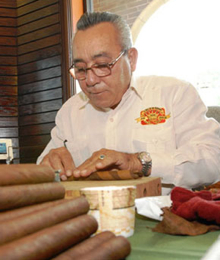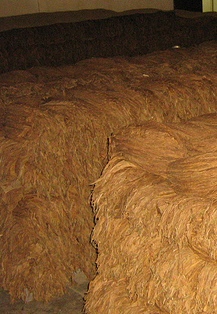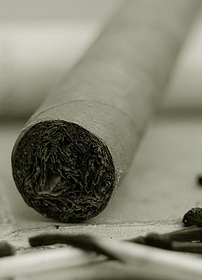Guest Commentary: One Should Be Wary of Greed
23 Apr 2008
[Editors’ Note: The following guest commentary by Sam Driban is a response to yesterday’s guest commentary by Gary J. Arzt . Mr. Driban is owner of the Black Cat Cigar Company.]

It was with both amusement and sadness that I read the Gary Arzt commentary, “One Should Be Wary of Black Cats,†on Tuesday. I’m happy that at least he acknowledged he was biased as both a devotee and friend of the Garcia family. The content also confirmed that he had spoken with the Garcia organization prior to his commentary.
I agree and laughably disagree with portions of Mr. Arzt’s words. I disagree that Black Cat is trying to “get even†with Pepin. We offer discounts of 40 percent or more on many products from many companies, not just Pepin’s, and we do this based solely on our business strategies. Also, we have not placed a single order with Pepin, contrary to Mr. Arzt’s statement, since we were informed that he would not be making the Rey Miguel cigars that we had put so much hope, effort, time, and money into.
I do agree that we have sent a mixed message with the rock bottom prices and hope for reconciliation. Mr Arzt is right as he quotes my words of “upset†and “blown-off.†I’m also forgiving and would welcome a call from Pepin. Sadly, I have not received one. I guess I’ve served my purpose for Pepin and am no longer needed. I am not alone, as Pepin has also blown-off and ceased production of brands for other hard-working, good people who spread the gospel and helped create this market for him.
The sarcasm in the commentary is absurd. Pepin didn’t think that cutting me off would affect our relationship? The bottom line is he just didn’t care. Continuing to make Rey Miguel, while perhaps inconvenient, really wouldn’t have been difficult and would’ve been the right thing to do. Mr. Arzt uses words like “dislocation†and “dynamics of companies.†These are words that I expect to read in a Wall Street Journal article, not a cigar blog commentary.
This is my 25th year in business. The “gentlemen†that Mr. Arzt refers to should be men such as Edgar Cullman Sr., Benjamin Menendez, and Jose Blanco. These are giants in our industry who I have learned from. They use words unfamiliar to El Rey de Los Habanos (Pepin’s company) such as “integrity,” “loyalty,” and, foremost, “passion†when it comes to the product and the relationships. Unfortunately, Pepin’s passion has evolved into a sad passion for greed.
–Sam Driban
photo credit: Black Cat Cigars

 Sam Driban of Black Cat Cigar Company was an early friend and fan of Don Pepin. Three years ago, Pepin started to make a cigar called
Sam Driban of Black Cat Cigar Company was an early friend and fan of Don Pepin. Three years ago, Pepin started to make a cigar called  Here’s the short version of the article (which can be read in its entirety
Here’s the short version of the article (which can be read in its entirety  Of all the silly narratives trotted out to hawk new cigar lines, this one seems to be popping up most frequently. If we are to believe it, then given the sheer number of “discoveries†made each month, cigar factories must be pretty shoddy operations – full of missing tobacco, abandoned buildings, and mismanaged supply chains.
Of all the silly narratives trotted out to hawk new cigar lines, this one seems to be popping up most frequently. If we are to believe it, then given the sheer number of “discoveries†made each month, cigar factories must be pretty shoddy operations – full of missing tobacco, abandoned buildings, and mismanaged supply chains. Naturally, it made me think about
Naturally, it made me think about  For Patrick A, it was the
For Patrick A, it was the  Soon after Castro came into power, it became clear that he was a brutal thug who had no intention of respecting the rights of Cubans. In response to his embrace of communism and his government cozying up to the Soviet Union, JFK imposed a complete trade embargo and travel ban. (Just before signing the ban, he hypocritically
Soon after Castro came into power, it became clear that he was a brutal thug who had no intention of respecting the rights of Cubans. In response to his embrace of communism and his government cozying up to the Soviet Union, JFK imposed a complete trade embargo and travel ban. (Just before signing the ban, he hypocritically  Patrick Ashby
Co-Founder & Editor in Chief
Patrick Ashby
Co-Founder & Editor in Chief Patrick Semmens
Co-Founder & Publisher
Patrick Semmens
Co-Founder & Publisher George Edmonson
Tampa Bureau Chief
George Edmonson
Tampa Bureau Chief